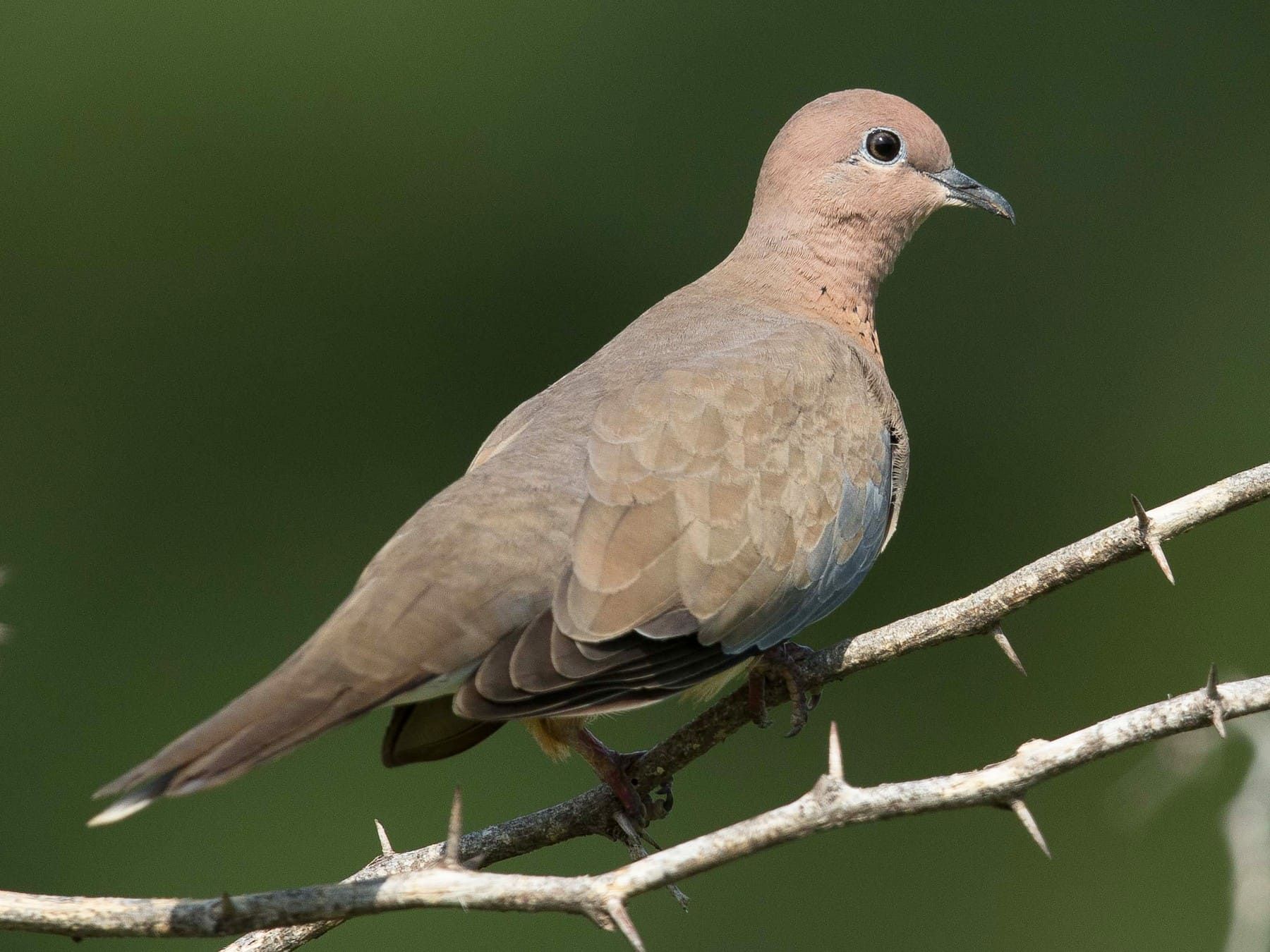Laughing dove
Spilopelia senegalensis
ORDER
Passeriformes
FAMILY
Pycnonotidae
GENIUS
Pycnonotus
2690
Observations
1900
Photos
26
Recordings
06
Videos

Description
The laughing dove is a long-tailed, slim pigeon, typically 25 cm (9.8 in) in length. It is pinkish brown on the underside with a lilac tinged head and neck. The head and underparts are pinkish, shading to buff on the lower abdomen. A chequered rufous and grey patch is found on the sides of the neck and are made up of split feathers. The upper parts are brownish with a bluish-grey band along the wing. The back is uniform and dull brown in the Indian population. The African populations senegalensis and phoenicophila have a bluish grey rump and upper tail coverts but differ in the shades of the neck and wing feathers while aegyptiaca is larger and the head and nape are vinous and upper wing coverts are rufous.[9] The tail is graduated and the outer feathers are tipped in white. The sexes are indistinguishable in the field. Young birds lack the chequered neck markings. The legs are red. The populations vary slightly in plumage with those from more arid zones being paler.[10] Abnormal leucistic plumages have been noted.
Distribution
It is a common and widespread species in scrub, dry farmland, and in areas of human habitation, often becoming very tame. Its range includes much of Sub-Saharan Africa, Saudi Arabia, Iran, Iraq, Afghanistan, Pakistan, and India. It is also found in Cyprus, Israel, Lebanon, Syria, Jordan, the UAE, and Turkey (these populations may be derived from human introductions). They are mostly sedentary but some populations may make movements. Birds ringed in Gujarat have been recovered 200 km north in Pakistan and exhausted birds have been recorded landing on ships in the Arabian Sea.[10][13] The species (thought to belong to the nominate population) was introduced to Perth in 1889 and has become established around Western Australia.[14] Birds that land on ships may be introduced to new regions.
Habitat
The Laughing Dove frequents dry areas, wooded savannahs, thickets of acacias at some kilometres from water. This species nests in bushes or trees. It is resident in urban areas, large towns and villages.
Feeding
Diet consists of mostly of small seeds but some subspecies also eat sunflower and maize grain. Fruit is also taken in addition to some vegetation and small insects.
Breeding
The breeding season varies according to the range. The Laughing Dove is monogamous, solitary and territorial. The pair-bonds are for the life. This species breeds all year round and nests in trees and shrubs. The nest is a flimsy platform built by the female, made with roots, twigs and stems often brought by the male. It is usually situated between 3 and 15 metres above the ground. The same nest can be used several times, and some doves use old abandoned nests of other birds’ species
Threats
The Laughing Dove is not threatened. The species is common and widespread in most part of the range. It adapts to all environments, making it able to survive, including in the introduced ranges.
References
Del Hoyo, J, A Elliot, and J Sargatal, eds. 1997. Handbook of the Birds of the World. Volume 4: Sandgrouse to Cuckoos. Barcelona: Lynx Edicions. ISBN 978-8487334221 Johnson, K. P. et al. (2001). A molecular phylogeny of the dove genera Streptopelia and Columba. The Auk 118 (4): 874–887. Gill, F and D Donsker (Eds). 2017. IOC World Bird Names (version 7.1). Available at http://www.worldbirdnames.org/. Clements, J. F., T. S. Schulenberg, M. J. Iliff, S. M. Billerman, T. A. Fredericks, B. L. Sullivan, and C. L. Wood. 2019. The eBird/Clements Checklist of Birds of the World: v2019.